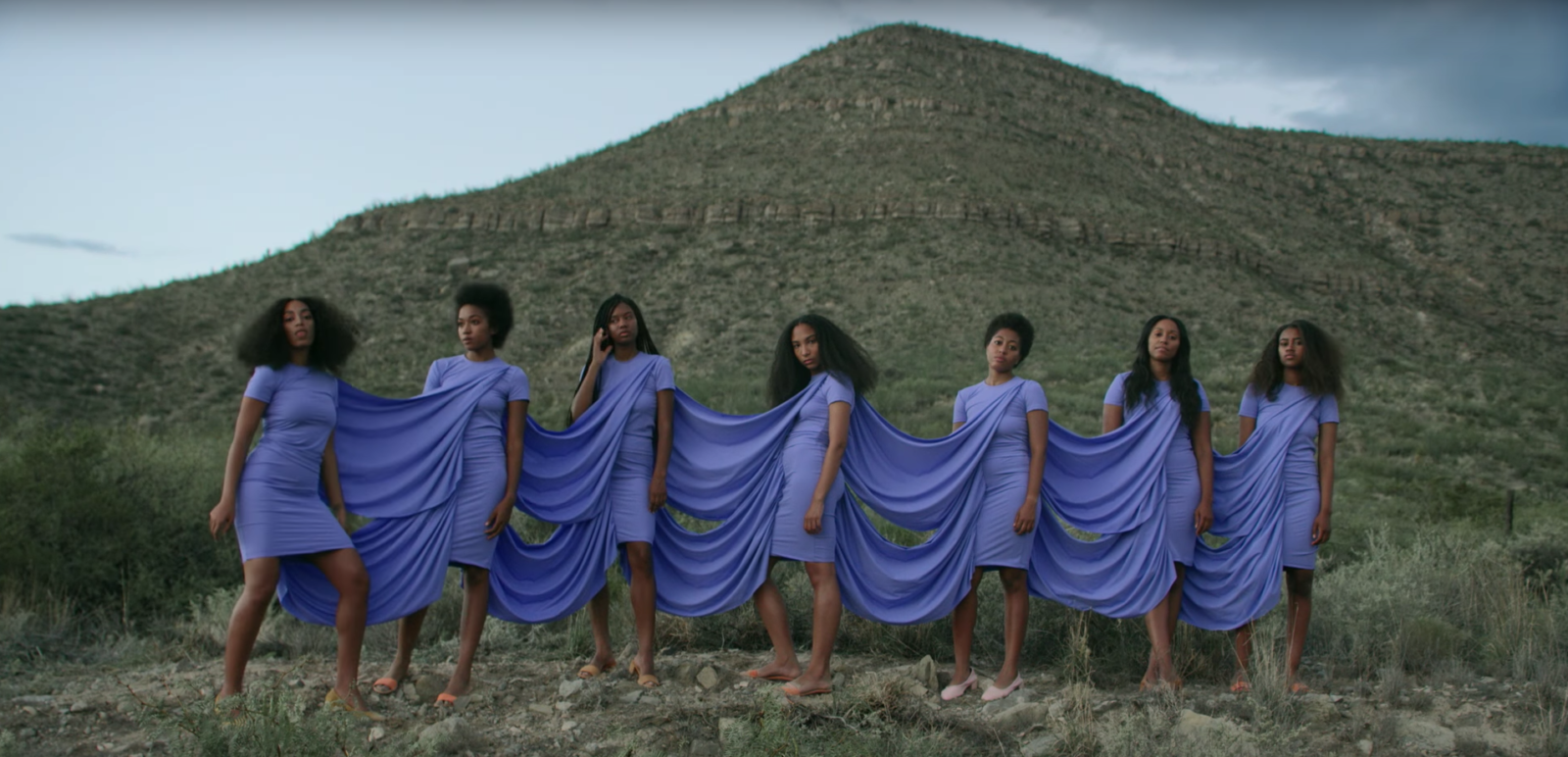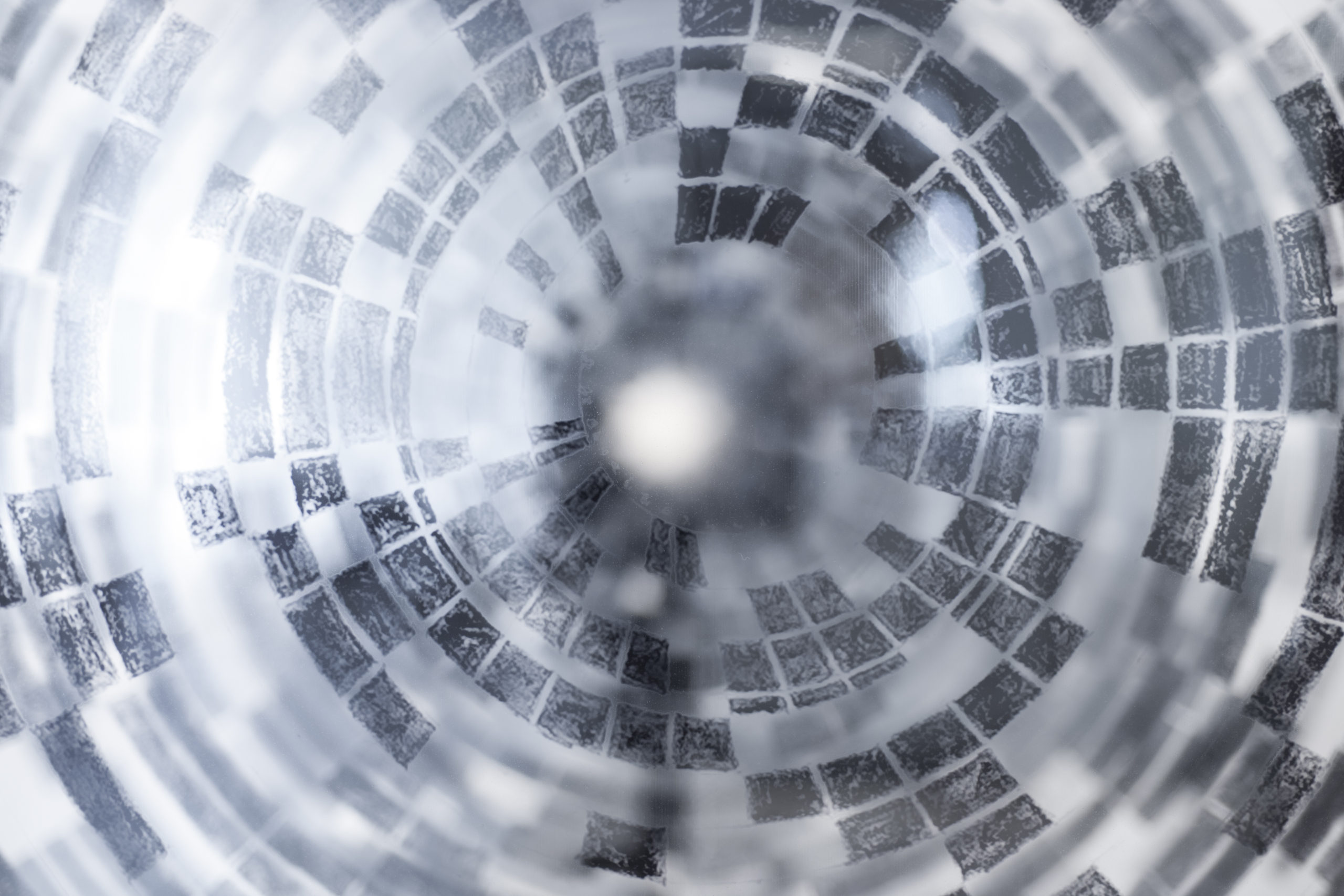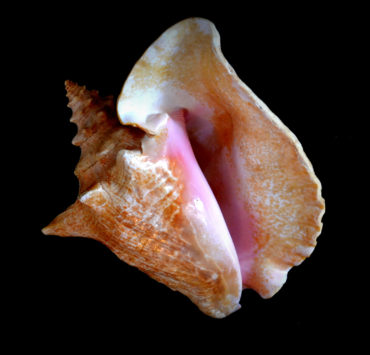
“I shall dance all my life. […] I would like to die breathless, spent, at the end of a dance.”
— Josephine Baker, “The Many Faces of Josephine Baker: Dancer, Singer, Activist, Spy”
Much will be written about Solange Knowles’s clear-throated, yet at once adorned, album A Seat at the Table. Here we have a register of quotidian black life against a torrent of black death. Across the album’s lifespan, love and life go on although they are contested by the ache and fury of postponed black citizenship. A Seat sounds like an adult contextualizing the now through the application of a parents’ wisdom. It is also an accumulation of the side conversations black folk have with each other, hugged by tender bellows of black pride.
The visual work in the video for “Cranes in the Sky” does its own special labor. It features a black woman camaraderie: a femme decadence that exists because one must insist on feeling like silk when your brown skin signals to others a readiness for death.
But it is in the choreography that I’d like to offer a few words in the hopes of situating dance as an important means through which A Seat’s black feminism is articulated.
“Cranes” opens to a string of flash images. Black women are together and Knowles is with them even when she is in solitude. In both of these contexts — either Solange as soloist or in concert — the world’s scenic beauty is her/their colleague. Inside the scenes where she is the lone body, for example, Knowles sits on a sawed tree stump, reposes on white tiled floor, and perches on an islet enveloped by a bayou. In the company of other black women, she is literally wearing foliage, resting inside an embodied plait of black women, or sharing in choreography with another.
The quotidian nature of the movement in “Cranes” — black women dancing in ways other than through marshalled choreography — is a black girl magic no better and no less than all the other ways we move. “Cranes” features black women delighting in the ways the body slinks in quiet; movement seems to come from a place of enactment done to instantiate one’s own pleasure. It forces us to pay attention to details. During an early moment in the video, Knowles’ raises her hand from her thigh to her hip. It slowly drifts up to her waist and lifts even higher toward her hair. Watch black women move slow, it says. And also: for this beauty, you are welcome.
The cast moves in motion: sometimes in sync, sometimes adjacent, but in many ways pedestrian. Pedestrian here is not a slur; it suggests that the quiet ways a body moves constitutes art. That walking, swaying and shifting weight between hips is as miraculous, as impressive, as an arabesque.
The movement in “Cranes” merges a postmodern sensibility grounded in the quotidian alongside an unmistakable Black Power framework. Among the gifts of “Cranes” is its framing of black women as comfortable (if not kited) by the spectacular fact of their mundanity.
Privileging the routine, sometimes quiet, ways that bodies move is an important tradition in postmodern dance. The labor involved in exploring the virtuosity of one’s own bodily range — thereby resisting the physical and spectatorial conventions of European dance — is a practice of self-possession.
Postmodern dance, emerging in the 1960s in part as a response to a frustration with the perceived rigidity of modern dance and ballet, challenged and expanded regulating ideas of technique, skill, and body type in the dance word. Rather than understanding dance or a dancer as something rendered by formal European dance training, postmodern dancers challenged strict boundaries; they saw just about everything as a dance. We can think here of Merce Cunningham, Yvonne Rainer, and Trisha Brown as examples of this tradition.
Although postmodern dancers played with conventions, their dance works rarely engaged the racialized contexts of their time. Thus, postmodern dance’s unmarked but prevailing ideas of whiteness were often positioned against black nationalist choreographers and companies of the time. Black artists who experimented with postmodernist themes were often seen as less black; black dancing bodies that did not approximate a presumed (Africanist) virtuosity were read as white. And yet, dance was an important place through which black art makers expressed identity and envisioned freedom, even if their dancing challenged policing assumptions about how black bodies ought to move.
It is a non-statement that popular culture is saturated with images of black women in motion. Yet, while black women move in all kinds of diverse ways, their dance is usually engaged vis-à-vis the moral shaming that attends twerking or the virtuous awe afforded to black women who master European forms like ballet. The problem here is that black women’s itinerant bodies are judged based on the presumed degree of labor and depth of chaste associated with a particular dance style. And yet black women being so regularly beheld, in more cases than not, actually obscures their being seen. “Cranes” offers a representational storehouse with which to challenge a narrow spectrum of black woman’s ambulant embodiment. The pace of “Cranes” demands a different kind of viewing— it requires spectatorial poise; it lets you in, but makes clear the inconsequentiality of your looking.
There are specific moments in which the movements force me into a stillness of watching. For example: seven black women sharing a lavender dress, draped to each other with a mountain as their backdrop. One woman shifts her energy to the right foot, returns to the left, and sinks back into her hip. Next, Knowles does a soft left-right rock. In this scene, all are connected but no one gives up self to match the other.
In “Cranes” there is no breeze felt only atop a pedestal. The airiness comes because this open space, this ground, is too a garland. After the drink, the dance, the sex, the reading, and putting one in the air there is you. There you are in all of your perfect regularity, “Cranes” suggests, going dizzy trying to stay busy.
Solange seems to begin with the entry of herself: lifting in the daylight, working through the day’s sun efficiently, careful not to call being occupied being loved. And all the while she is dancing, sometimes with the delicate intricacy of a paper crane, sometimes with all of the improvisatory carefreedom in the world.
“Cranes” extends a body of choreographic inspiration that asks: what if you were naked, no longer seeking distraction, undisguised about your yesterday, and you were your own chandelier? In this light, “Cranes” reverberates dance pioneer Josephine Baker. Better to die spent at the end of your own dance, than to chase another’s rhythm.
Image Credits: From Cranes In The Sky, Solange Knowles

Jasmine Elizabeth Johnson is an Assistant Professor of African & Afro-American and Women's, Gender, and Sexuality Studies at Brandeis University. Currently, Johnson is completing her manuscript, Rhythm Nation: West African Dance and the Politics of Diaspora, while in residence as a Newhouse Center for the Humanities Fellow at Wellesley College. She writes about dance, black feminism and diaspora.







